Japanese investigators have detailed the hard landing and roll-over sequence which destroyed a FedEx Boeing MD-11 freighter at Tokyo Narita a year ago.
In a progress report into the 23 March 2009 accident the Japan Transport Safety Board (JTSB) has released surveillance camera images showing that the aircraft, while landing on runway 34L, initially bounced after touching down on its main gear.
It touched down a second time but bounced again, higher, then pitched down and contacted the runway with its nose-gear, then its main gear. The impact fractured the left wing, between the engine and the fuselage, and the first signs of fire erupted before the aircraft - with its right wing still intact - rolled inverted.
The aircraft was consumed by fire. It had 28,000lt of fuel on board, as well as 400kg of flammable cargo, and was completely destroyed.
Neither of the two pilots survived. The captain had accumulated a total of 8,132hr flight-time while the first officer had 5,248hr.
In its update the JTSB shows that preceding aircraft had faced turbulent winds during the approach to Narita. A Nippon Cargo Airlines flight landing immediately before the FedEx MD-11F informed the tower that final approach conditions were "really rough", with winds "plus-minus 15kt below 1,000[ft]".
Two minutes before the crash the tower controller cleared the FedEx jet to land on 34L and advised of winds from 320° at 29kt but added: "Maximum 36, minimum 17."
Some 40sec later cockpit-voice recorder information captured the captain possibly referring to a turbulent approach - "Yee haw, ride 'em cowboy" - after the jet descended below 1,000ft.
After the MD-11F's central aural warning system called the height at 500ft, the captain stated: "Cleared to land 34L, stable." Four seconds later, the first officer commented: "Sheee."
The JTSB's update does not indicate any further comment from the crew before the impacts at touchdown.
It states that the aircraft landed at 166kt. As it bounced the jet's pitch reduced to level flight and the aircraft contacted the runway harder, with an impact of 2.21g.
The MD-11F bounced into the air a second time, pitching to 6.7° nose-up and reaching a height of 16ft before pitching to 4.9° nose-down. The third impact registered 3.06g and resulted in serious structural wing damage in the region of the left-hand main gear.
JTSB investigators have yet to reach conclusions on the crash. The broad dynamics of the accident sequence parallels that of several events in which MD-11 aircraft have rolled over after a heavy landing.
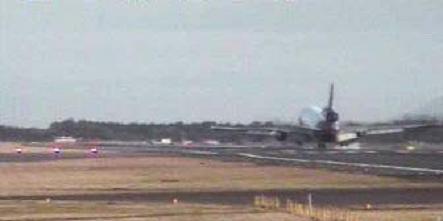 |
|---|
06:48:20: Touchdown on main gear |
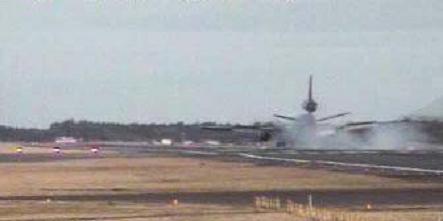 |
|---|
06:48:21: Initial bounce |
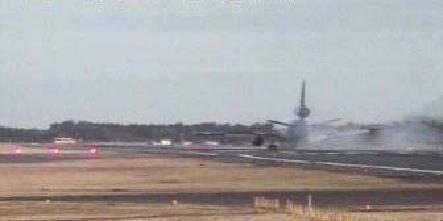 |
|---|
06:48:22: Second touchdown at reduced pitch |
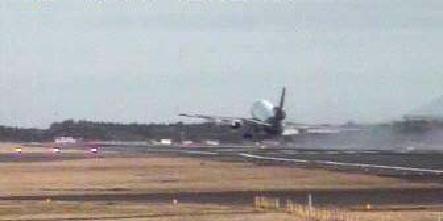 |
|---|
06:48:24: Second bounce and pitch-up |
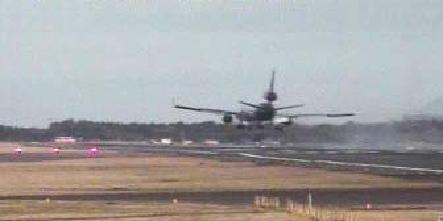 |
|---|
06:48:25: MD-11F reaches height of 16ft |
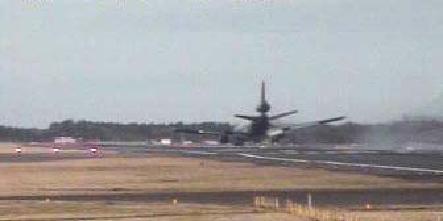 |
|---|
06:48:27: Pitch-down and nose-gear contact |
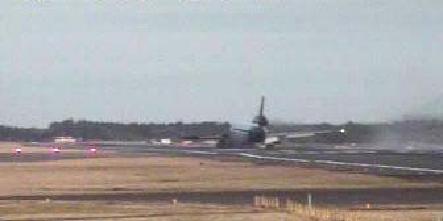 |
|---|
06:48:27: Heavy main-gear impact, structural damage |
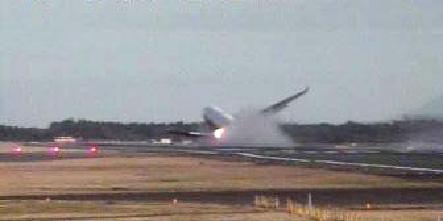 |
|---|
06:48:29: Fracture and separation of left wing, initial fire |
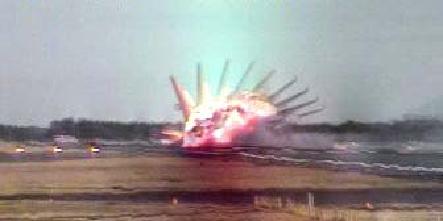 |
|---|
06:48:28-06:48:31: MD-11F rolls inverted to the left |
Images: Japan Transport Safety Board
Source: Air Transport Intelligence news























